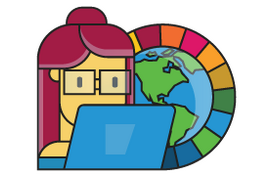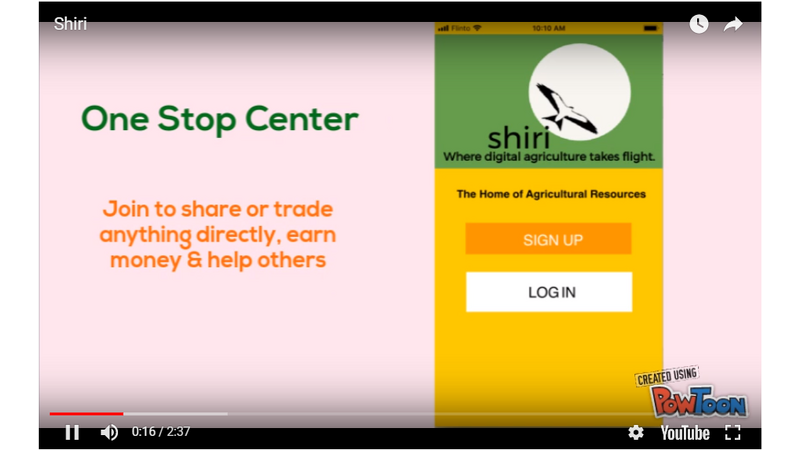https://docs.google.com/document/d/1phQEyAxmDWNSi1ZPFCkiLd_2d5-N8WFZVWRRGgtw3mg/edit?usp=sharinghttps://docs.google.com/presentation/d/1uijQyeaXP19I5469YAIUUA8po9mhuJqsYigSob8HjKw/edit?usp=sharing
Once revered as southern Africa's breadbasket, Zimbabwe’s agriculture has struggled. In Zimbabwe, there is lack of market information for agricultural produce leading to post-harvest spoilage. There is also low agricultural productivity resulting in food desserts due to lack of efficient tools and information about better agricultural methodology. This cumulation of events led to a famine of historic proportions in 2008 which occurred in the absence of a drought or floods as a trigger. Malnutrition and Stage1 famines have also been prevalent since. Thus, we pondered on how to make sure there is enough food on the market and farmers have access to resources that maximize their harvests. We created Shiri, a mobile application to create digital resources for agricultural innovation. Our approach is building a digital agricultural system for African countries starting with Zimbabwe.
SolutionShiri’s application enables peer-to-peer communication between farmers and stakeholders. This builds a strong agricultural network. Farmers can also make profits by cutting down middlemen in the sale of their produce. Seed and agrochemical companies can advertise and reach farmers directly. Drivers can make money by transporting farmers. Shiri gives farmers opportunity to sell their produce directly or buy from others which solves post-harvest spoilage and lets farmers earn money. Microfinance agencies can become more easily accessible to all farmers. Farmers check weather forecast and do planning beforehand. Farmers can share tools and equipment by renting them out, especially tractors. Additionally, farmers have emergency support from veterinarians or ask for advice on agro extension and micro-finances.
Statistical validation
233 million people in sub-Saharan Africa were hungry/undernourished in 2014-6. 40% of all children in sub-Saharan Africa are stunted specifically 28% of children under age five in Zimbabwe are stunted as a result of chronic malnutrition. Zimbabwe has a total land area of over 39 million hectares, of which 33.3 million hectares are used for agricultural purposes. Although Zimbabwe has some 4.3 million hectares of arable land, only 2.8 million hectares of land were cultivated during the 2014/15. (World Hunger.org)
Agriculture in Zimbabwe
Agriculture, the backbone of Zimbabwe's economy contributes only 11-14 percent of GDP but the sector provides employment for 70 percent of the population, and about 60 percent of all raw materials for the industry. About 45 percent of the country's exports are of agricultural origin. (Statista). The issue of figuring out how to provide adequate nutrition future populations needs urgent attention making agricultural technology the next opportunity for disruption.
App development
The application is already designed to determine functionality and features, visual design and navigation. Since, most of the people in Zimbabwe and countries with poor tech infrastructure use android to use internet, we will make a native application, using React Native, which will be available in both Android and IOS. We will use weather api, google calendar api, push api for weather checking, planning and event reminder services. Furthermore, in the future, we want to add services like EcoCash, Google pay, BKash and javax.crypto for easier and secure payment. We also want to use Google Maps and ClearPathGPS API for real time tracking service which can help both the farmers and the transporter track the orders fast and easy. The database we will use is the IBM Cloud management software.
Mobile phones
With the abundance of mobile phones because of the use of mobile money, implementing the application is not the challenge, people already have phones and bringing the application to them is what they await. Low IT literacy required to operate apps. At national level the proportion of households with at least one household member with a mobile cellular telephone at home was about 89%. (ZIMSTAT). With the expansion of mobile money, EcoCash, a fast, secured money transfer system users can send or receive money through their mobile number. We will work with large seed companies, local farmers’ union and local media (radio, television, newspaper) to publicize Shiri. We will get help from local educational institutes to teach people how to use Shiri and get the best out of it.
Why shiri
Using Shiri, we want to help farmers increase productivity, have better financing, get emergency veterinary help and above all, fight food deserts and famines. With a strong network, farmers will be able to organize events, local markets and increase market scope and opportunities. Our target market is farmers, consumers, drivers, food processing plants, Nonprofits & Development Corporations, Agricultural Banks, feed & seed companies, genetic experts and agricultural consultants among others.
Go-to-market strategy
Radio Stations: 100% of the population had listened to the radio in the past year, 92.8% in the past seven days, and 73.7% as recently as the day before (InterMedia, 2005). The 2002 census showed that about half of households (49.2%) in the country reported that “word of mouth” was their main source of information, followed by radio (47.8%).Newspaper and magazine advertisements: 44% of urban dwellers read the newspaper at least once a week.Television talk shows.Bulk message advertising.
Expansion
After working on initial product delivery in Zimbabwe we hope to use the same application, modify and customize a few things for example the language and initiate it in other African countries, Bangladesh and perhaps India. The model is universal and can be used in any country where farmers are disconnected from resources that help them maximize their harvests.
Community Engagement
To engage communities, Shiri is dedicated to working with schools and universities to inspire a new generation of people who understand the importance of agriculture. We host agricultural days at various institutions where students get to plant their school garden and learn about agriculture. Shiri works with local african farmers and various regional and international universities to create partnerships for on the ground agricultural research. As youth, agriculture determines our food supply thus we must be willing to engage in that conversation. Researchers day by 2050, Africa’s population will double, with 1 billion projected to be under 18 years old. How will we feed the population and can we employ these people in agriculture? The youth are the future of food production and we are hopeful about the role of youth in agriculture, particularly in Africa.



Comments (35)
t
testing
t
testing
t
testing
t
testing
t
testing
t
testing
t
testing
t
testing
t
testing
t
testing